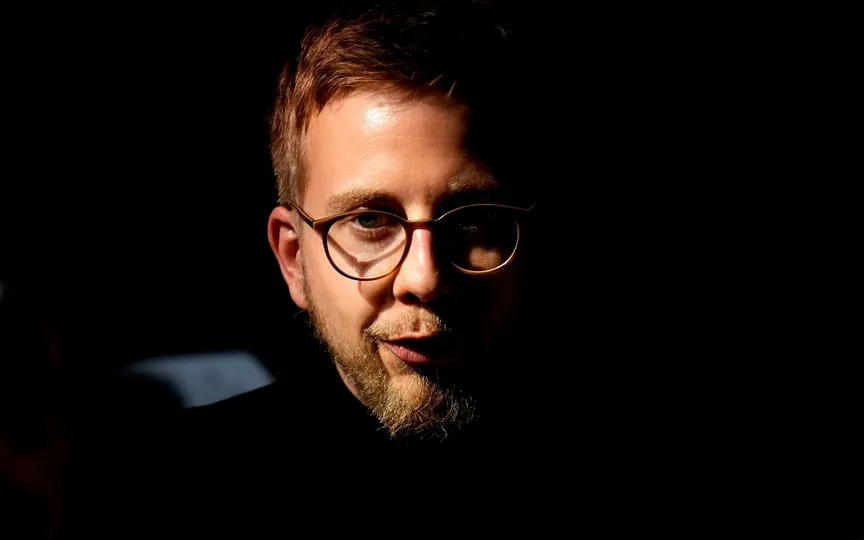Hundreds Gather to Hear Sermon Delivered by ChatGPT Chatbot Avatar
The chatbot powered by artificial intelligence requested the congregation at the crowded St. Paul’s church in Fuerth, Bavaria to stand up from their seats and offer their adoration to God.
The ChatGPT chatbot, personified by a bearded black man avatar on a large screen above the altar, then began preaching to more than 300 people who had arrived Friday morning for an experimental Lutheran church service that was almost entirely created by artificial intelligence.
“Dear friends, I have the honor to stand here and preach to you as the first AI at this year’s Protestant convention in Germany,” the avatar said with an expressionless face and monotone voice.
The 40-minute service – including a sermon, prayers and music – was created by ChatGPT and Jonas Simmerlein, a theologian and philosopher from the University of Vienna.
“I designed this service — but I actually followed it more because I would say about 98% comes from the machine,” the 29-year-old researcher told the Associated Press.
The service at the AI Church was one of hundreds of events at the Protestant convention in the Bavarian cities of Nuremberg and neighboring Fuerth, and attracted so much interest that people formed a long line outside the 19th-century neo-Gothic building every hour. before it started.
The convention itself – Deutscher Evangelischer Kirchentag in German – takes place every other year in the summer at a different location in Germany and attracts tens of thousands of believers to pray, sing and discuss their faith. They also talk about current issues in the world and look for solutions to key issues, which this year included global warming, the war in Ukraine – and artificial intelligence.
This year’s gathering takes place from Wednesday to Sunday with the motto “Now is the time”. This slogan was one of the phrases Simmerlein fed into ChatGPT when he asked the chatbot to develop a sermon.
“I said to the AI, ‘We’re at a church convention, you’re a preacher … what would the service look like?'” Simmerlein said. He also asked for the Psalms to be included, as well as prayers and a blessing at the end.
“You get a pretty solid service,” Simmerlein said, sounding almost amazed at the success of his experiment.
Indeed, the faithful of the church listened attentively as the AI preached about leaving the past behind, focusing on the challenges of the present, overcoming the fear of death, and losing faith in Jesus Christ.
The entire service was “managed” by four different avatars on the screen, two young women and two young men.
At times, the AI-created avatar accidentally elicited laughs, like when it used platitudes and told churchgoers in a cul-de-sac that “to keep our faith we must pray and go to church regularly.”
Some people enthusiastically recorded the event on their cell phones, while others looked more critically and refused to speak aloud during the Lord’s Prayer.
Heiderose Schmidt, 54, who works in the IT industry, said she was excited and curious when the service started, but found it increasingly scary as it progressed.
“There was no heart and no soul,” he said. “The avatars showed no emotion at all, had no body language and spoke so quickly and monotonously that it was very difficult for me to focus on what they were saying.”
“But maybe it’s different for the younger generation that grew up with all that,” Schmidt added.
Marc Jansen, a 31-year-old Lutheran pastor from Troisdorf near the West German city of Cologne, brought a group of teenagers from his parish in St. To Paul. The experiment impressed him more.
“I had actually imagined it to be worse. But I was positively surprised at how well it worked. The AI language also worked well, although it was a bit choppy at times,” Jansen said.
However, the young pastor missed any kind of emotion or spirituality, which he says is essential when writing his own sermons.
Technology ethics researcher Anna Puzio, 28, from the University of Twente in the Netherlands, also participated in the event. He said that he sees many opportunities in the use of artificial intelligence in religions – for example, to make religious services more accessible and inclusive for believers who, for various reasons, may not be able to experience their faith personally with others in worship rooms.
However, he pointed out that there are also dangers associated with the use of artificial intelligence in religion.
“The challenge I see is that AI is very human-like and easy to deceive,” he said.
“We also don’t just have one Christian opinion, and that’s what AI needs to represent as well,” he said. “We have to be careful that it is not misused for the purposes of spreading only one opinion.”
Simmerlein said his goal is not to replace religious leaders with artificial intelligence. Rather, he sees the use of artificial intelligence as a way to help them in their daily work in their churches.
Some pastors look to literature for inspiration, he says, so why not also ask for AI ideas for an upcoming sermon. Others would like more time for the personal spiritual guidance of their parishioners, so why not speed up the writing of the sermon with the help of a chatbot to leave time for other important tasks.
“Artificial intelligence is increasingly taking over our lives, in every part of it,” Simmerlein said. “And that’s why it’s helpful to learn how to deal with it.”
However, the experimental church service also showed the limits of implementing artificial intelligence in church or religion. There was no real interaction between the worshipers and the chatbot, which could not react to the laughter or other reactions of the churchgoers as a human pastor might have done.
“The pastor is in the congregation, he lives with them, he buries people, he knows them from the beginning,” Simmerlein said. “Artificial intelligence can’t do that. It doesn’t know the congregation.”




